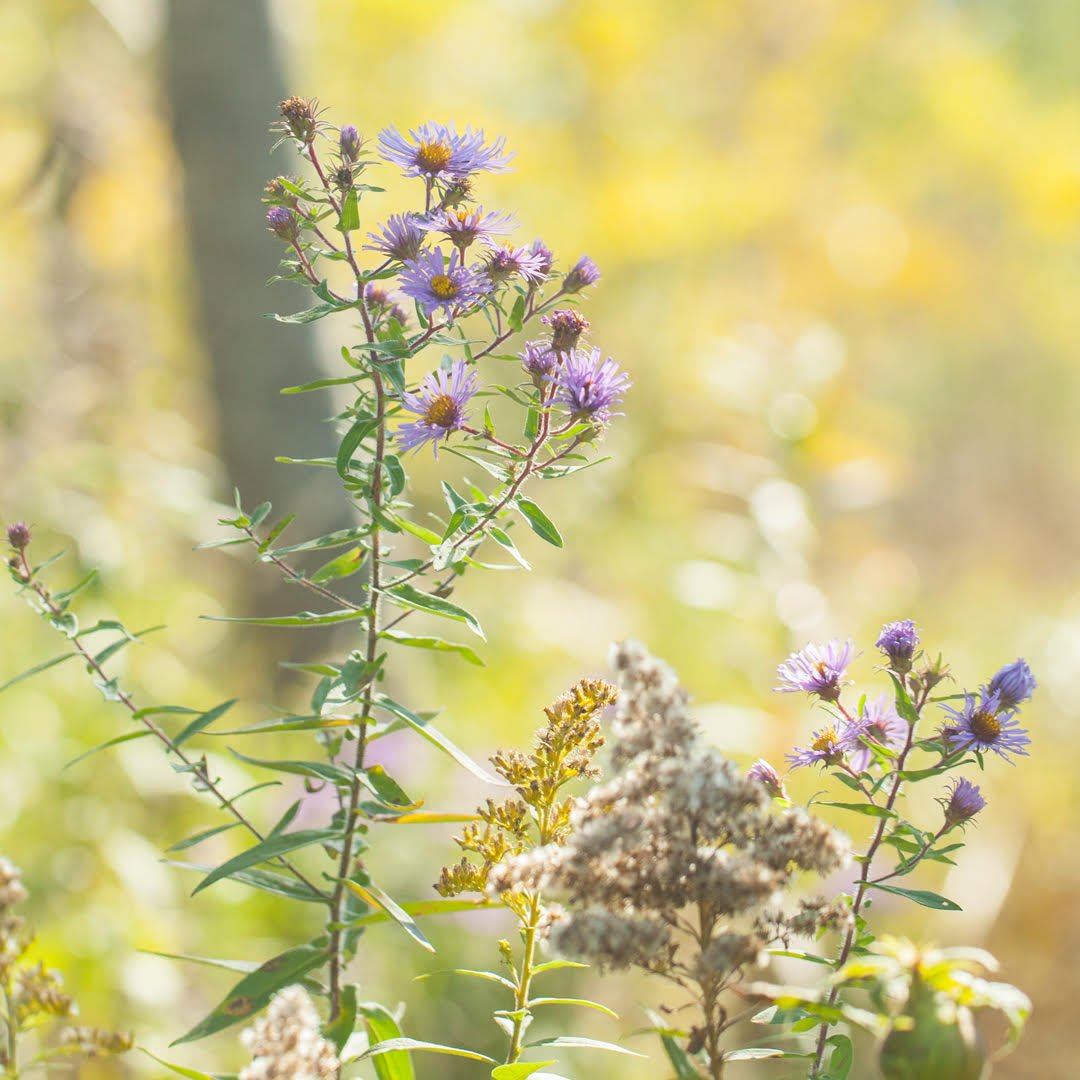NEW ENGLAND ASTERS
Suited to its season of transition relating to the lungs and the large intestines, this medicine opens the lungs to enhance the exchange of gas, improving circulation of nutrients through the body, strengthening the immune system and soothes the digestive tract as our diets transition to richer, complex, nutrient dense foods.
Common Name:
Latin Name:
Family:
Season:
Sunlight:
Soil:
Identification:
New England Asters
Symphyotrichum novae-angliae
Asteraceae
Late summer and fall
New England asters need full sun to grow and bloom their best
Thrive in a slightly acidic moist soil and with good drainage, but they can grow in other soil types as well. Even clay soil.
Purple flowers with numerous rays with clasping leaves and a rough stem. Leaves smell a bit spicy when crushed.
As the warmth of summer feels at its end and the temperatures drop overnight towards single digits, the green of leaves disappear and the purple of New England Aster flowers flood the fields and forest borders.
The prolific fall herb, New England Asters, Symphyotrichum novae-angliae, has immense value.
These wildflowers grow alongside goldenrod from August until November and attract pollinators late into the season.
Medicinally, the flowers and leaves have an affinity to the upper and lower respiratory tract, acting as a decongestant, antispasmodic, relaxant, and nervine, useful for treatment of seasonal allergies, asthma, and coughs of various etiologies.
It is used as a warming expectorant to expel phlegm, relieve cough, and to dilate airways.
MEDICINAL PROPERTIES
lung decongestant
lung nervine
lung anti-spasmotic
lung relaxant
relieves coughs
reduce allergic symptoms
carminative
relieves bloating and gas






